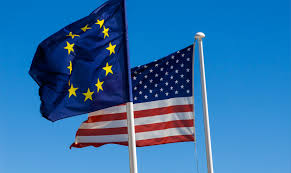Relief As US, EU Agree To Avoid Trade War After Intense Negotiations

“Amid escalating trade tensions, the United States and the European Union managed to avoid a tariff war that could have had devastating effects on their economies. The agreement establishes a 15% tariff on most European products, a moderate increase compared to previous rates but far from the initial threats made by President Donald Trump. The resolution offers partial relief to global markets and highly exposed industrial sectors, including steel, aluminum, and pharmaceuticals.
The negotiations were intense and complex, mainly due to frictions over industrial subsidies and technical standards. Progress was made possible after a direct conversation between Trump and European Commission President Ursula von der Leyen, following weeks of pressure from European leaders. Both sides acknowledged that a tariff escalation would harm not only bilateral trade but also global economic stability, already weakened by a volatile geopolitical environment.
The agreement includes key commitments such as increased European investment in the U.S. and a rise in the purchase of American liquefied natural gas. It also eliminates specific tariffs in strategic sectors such as aerospace, semiconductors, and medical products. These measures aim to foster transatlantic industrial cooperation, strengthen supply chains, and reduce dependence on third countries, particularly in sensitive areas such as energy and advanced technology.
However, the agreement received a lukewarm response. Many analysts and business leaders noted that several of the commitments were already underway before the announcement and that the deal does not fundamentally address non-tariff barriers that hinder mutual market access. Issues such as technical regulations, cross-certification, and agricultural subsidies continue to be sources of friction that were not resolved in this negotiation round.
On a political level, the pact also reflects both sides’ need to show tangible results without conceding too much. In the U.S., the government aims to project a strong stance in defense of industrial workers, while the EU seeks to protect its open trade model without triggering a prolonged confrontation. Economic diplomacy played a central role in avoiding a more profound rupture, but the balance achieved is fragile.
From a geoeconomic perspective, this agreement must also be seen in the context of China’s rise and the need to reshape trade alliances. Washington and Brussels share concerns about unfair Chinese competition and the need to establish common standards against practices like dumping, overproduction, and state control of key sectors. In this sense, the pact could serve as a platform for greater future coordination.
Finally, the energy context influenced the terms of the deal. With the war in Ukraine still affecting Europe’s energy supply, Brussels has sought to diversify its sources and reduce dependency on Russian gas. The agreed purchases of American energy, mainly liquefied natural gas, respond not only to economic criteria but also to geostrategic interests. This element strengthens the transatlantic bond at a time when the global order is being redefined.
In conclusion, although the agreement between the U.S. and the EU averted a damaging trade war, its real effects remain to be seen. While progress was made in strategic sectors and energy cooperation was reinforced, the deal leaves several structural issues unresolved. Even so, in a world marked by geopolitical fragmentation and economic risks, this understanding represents a diplomatic reprieve. It will be crucial for both sides to continue working on a shared agenda that prioritizes stability, fair trade, and joint innovation.”
Di Giacomo is Financial Markets Analyst for LATAM at XS





